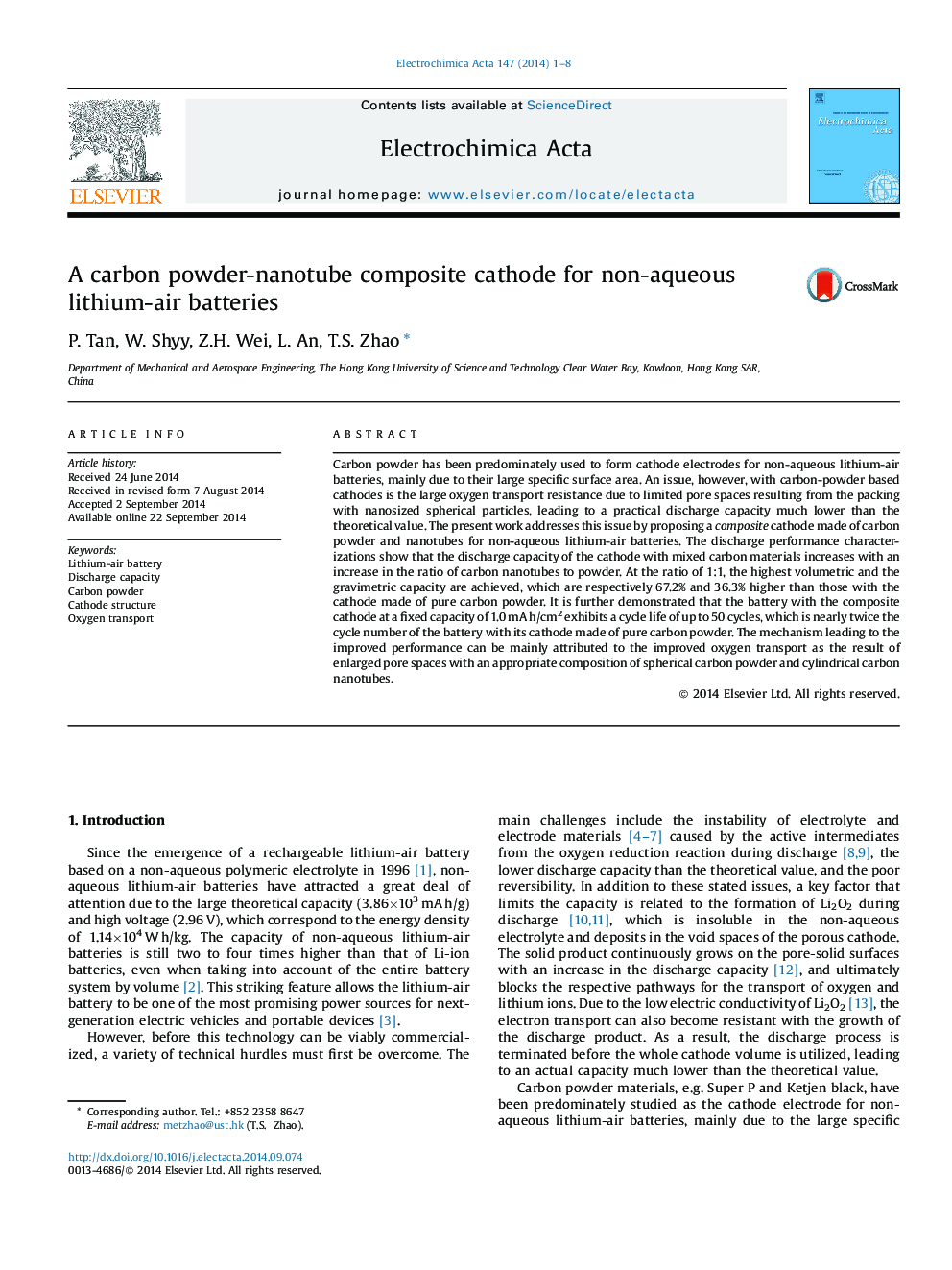| Article ID | Journal | Published Year | Pages | File Type |
|---|---|---|---|---|
| 185029 | Electrochimica Acta | 2014 | 8 Pages |
•A composite cathode made of carbon powder and nanotubes is proposed.•The new electrode enables a substantial increase in the capacity and cycle number.•The improved performance can be mainly attributed to the enlarged pore spaces.
Carbon powder has been predominately used to form cathode electrodes for non-aqueous lithium-air batteries, mainly due to their large specific surface area. An issue, however, with carbon-powder based cathodes is the large oxygen transport resistance due to limited pore spaces resulting from the packing with nanosized spherical particles, leading to a practical discharge capacity much lower than the theoretical value. The present work addresses this issue by proposing a composite cathode made of carbon powder and nanotubes for non-aqueous lithium-air batteries. The discharge performance characterizations show that the discharge capacity of the cathode with mixed carbon materials increases with an increase in the ratio of carbon nanotubes to powder. At the ratio of 1:1, the highest volumetric and the gravimetric capacity are achieved, which are respectively 67.2% and 36.3% higher than those with the cathode made of pure carbon powder. It is further demonstrated that the battery with the composite cathode at a fixed capacity of 1.0 mA h/cm2 exhibits a cycle life of up to 50 cycles, which is nearly twice the cycle number of the battery with its cathode made of pure carbon powder. The mechanism leading to the improved performance can be mainly attributed to the improved oxygen transport as the result of enlarged pore spaces with an appropriate composition of spherical carbon powder and cylindrical carbon nanotubes.
